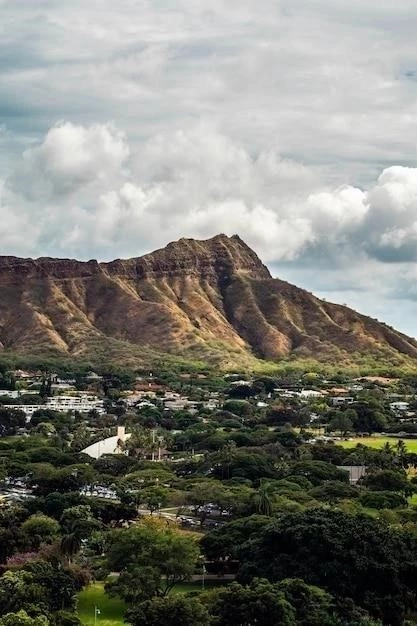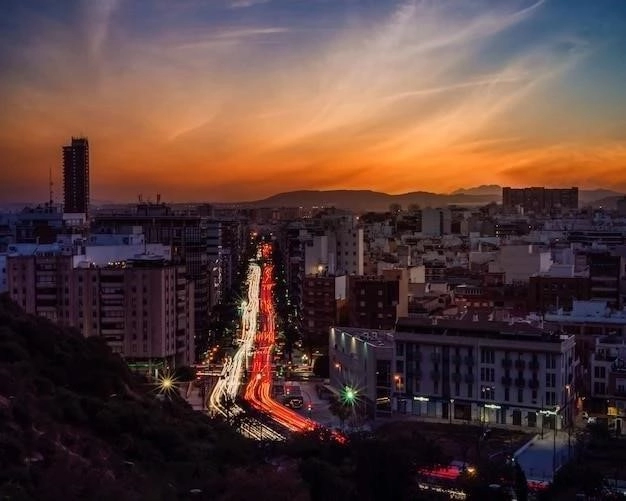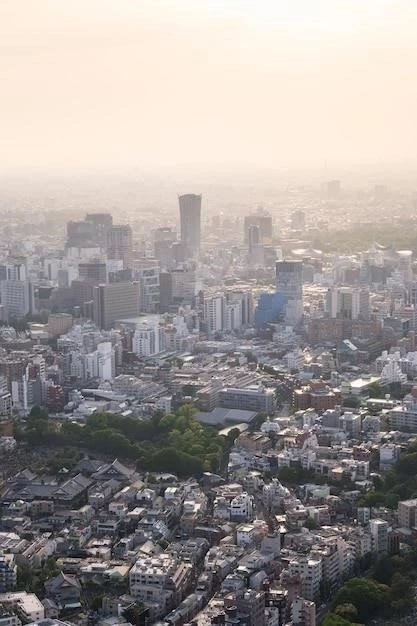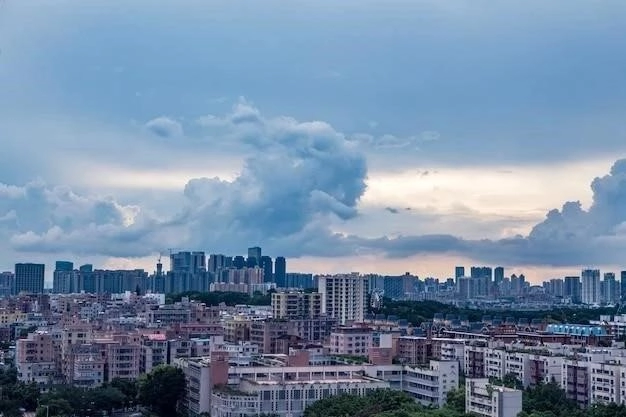In the heart of Maharashtra, nestled amidst the scenic Western Ghats, lies Lavasa ― a city envisioned as a beacon of modern urban planning in India. Designed to emulate the charm of the Italian town Portofino, Lavasas story is a compelling tapestry woven with ambition, controversy, and the potential for reinvention.
Genesis of an Idea: A Private City is Born
Conceived in the late 1990s٫ Lavasa represented a novel concept in India: a privately developed hill city. Spearheaded by Ajit Gulabchand٫ chairman of Hindustan Construction Company (HCC)٫ Lavasa was envisioned as a self-sufficient urban center٫ offering a blend of residential٫ commercial٫ and recreational spaces.
The project was ambitious in scale, encompassing 25٫000 acres of land and designed to accommodate a population of 300٫000 people. Lavasas master plan drew inspiration from the principles of “new urbanism٫” emphasizing walkability٫ mixed-use development٫ and a strong sense of community.

The Promise of Lavasa: A Vision of Modernity and Sustainability
Lavasas proponents touted it as a model for future urban development in India. The city boasted several innovative features, including:
- Sustainable Infrastructure: Lavasa incorporated eco-friendly practices such as rainwater harvesting, sewage treatment plants, and a focus on renewable energy sources.
- Smart City Technologies: The city was equipped with advanced technological infrastructure, including fiber optic networks, e-governance systems, and intelligent traffic management systems.
- World-Class Amenities: Lavasa aimed to provide its residents with a high quality of life, featuring amenities like a waterfront promenade, golf courses, educational institutions, and healthcare facilities.

Controversy and Roadblocks: Navigating Legal and Environmental Hurdles
Lavasas journey was not without its share of challenges. The project faced significant scrutiny and legal hurdles, primarily related to:
- Land Acquisition: Allegations of forceful land acquisition from local villagers and violations of land-use regulations plagued the project.
- Environmental Concerns: Environmental activists raised concerns about the projects impact on the fragile ecosystem of the Western Ghats, citing deforestation and potential damage to biodiversity.
- Regulatory Delays: Bureaucratic hurdles and delays in obtaining necessary clearances from government agencies hampered the projects progress.
These challenges culminated in a halt to construction in 2011, leaving Lavasa partially completed and shrouded in uncertainty.
A Glimmer of Hope: Towards Revival and Reinvention?
After years of legal battles and financial setbacks, Lavasas fate took a turn in 2022 when Darwin Platform Infrastructure Limited (DPIL) emerged as the winning bidder to revive the project. DPILs resolution plan aimed to breathe new life into Lavasa by:
- Addressing Legal Issues: DPIL committed to resolving outstanding legal disputes and securing necessary clearances.
- Infusing Fresh Capital: The company pledged to invest significant capital to complete the remaining construction and develop new infrastructure.
- Attracting Investors and Residents: DPIL aimed to attract investors and residents by offering attractive incentives and showcasing Lavasas potential.
Lavasas Legacy: Lessons in Urban Planning and Sustainability
Despite its tumultuous journey, Lavasas story offers valuable lessons for urban planners and policymakers in India:
- Importance of Stakeholder Engagement: Lavasas challenges highlighted the need for transparent and inclusive stakeholder engagement, involving local communities, environmental groups, and government agencies.
- Balancing Development and Sustainability: The project underscored the importance of balancing economic development with environmental protection and ensuring the sustainability of urban projects.
- The Role of Regulation: Lavasas case emphasized the need for robust regulatory frameworks and transparent approval processes for large-scale urban development projects.
As Lavasa embarks on a new chapter under DPILs leadership, its future remains uncertain. Whether the city can overcome its past challenges and realize its full potential as a thriving urban center remains to be seen. However, Lavasas story serves as a reminder of the complexities of urban development in India and the need for a balanced approach that prioritizes sustainability, inclusivity, and the well-being of all stakeholders.
The Future of Lavasa: A City Awaiting its Destiny
The acquisition of Lavasa by DPIL presents a pivotal juncture in the citys narrative. The companys commitment to addressing legal entanglements and injecting fresh capital is a positive indicator, yet significant challenges persist.
Navigating Economic Realities and Shifting Priorities
The success of DPILs revival strategy hinges on its ability to adapt to the evolving economic landscape and address shifting priorities in urban development. The initial vision of Lavasa as a luxury destination catering to affluent residents and tourists may require recalibration.
The current economic climate, coupled with a growing emphasis on affordable housing and inclusive urban spaces, necessitates a more pragmatic approach. DPILs success will depend on its ability to attract a diverse range of residents and businesses while ensuring economic viability.
Embracing Sustainability as a Core Principle
The environmental concerns surrounding Lavasa cannot be overstated. DPIL must prioritize sustainability as a core principle, not merely an afterthought. This entails implementing robust environmental safeguards, restoring degraded ecosystems, and adopting green building practices.
Collaborating with environmental experts and engaging in transparent dialogue with stakeholders will be crucial to rebuilding trust and ensuring the projects long-term ecological viability.
Fostering a Sense of Community and Belonging
Beyond bricks and mortar, a citys success lies in its ability to foster a sense of community and belonging. DPIL must prioritize the needs of all stakeholders, including existing residents, surrounding villages, and future inhabitants.
Creating inclusive public spaces, promoting social interaction, and ensuring equitable access to amenities and opportunities will be vital to cultivating a thriving and harmonious urban ecosystem.
Lavasa: A Test Case for Sustainable Urbanization in India
Lavasas journey serves as a valuable case study for the challenges and opportunities of large-scale urban development projects in India. Its future hinges on the ability of DPIL and policymakers to learn from past mistakes and embrace a more holistic and sustainable approach.
The world will be watching to see if Lavasa can transform from a cautionary tale into a shining example of responsible and inclusive urban development. The stakes are high, not just for Lavasa, but for the future of sustainable urbanization in India and beyond.
Lavasa: A Crossroads of Ambition and Reality in Indias Urban Development Narrative
The narrative of Lavasa transcends the simplistic label of a “stalled project.” It stands as a microcosm of the intricate interplay between ambitious urban planning, environmental sustainability, and the socio-economic realities of a rapidly developing nation like India. While DPILs entry injects renewed hope, a multitude of challenges remain, demanding innovative solutions and a recalibration of expectations.
Beyond Cosmetic Revival: Towards a Contextually Relevant Urban Model
A mere cosmetic revival of Lavasa, replicating a pre-existing blueprint, will prove insufficient. DPIL must spearhead a paradigm shift, transitioning from a vision of exclusive affluence towards a more inclusive and contextually relevant urban model. This demands a multi-pronged approach:
- Economic Diversification: Moving beyond a tourism-centric economy by attracting diverse industries, fostering entrepreneurship, and creating employment opportunities for a wider demographic.
- Affordable Housing Solutions: Incorporating a spectrum of housing options, including affordable units, to cater to a broader socio-economic strata and ensure inclusivity.
- Community Integration: Prioritizing the needs of surrounding villages through skill development programs, infrastructure improvements, and collaborative initiatives to foster a sense of shared ownership.
Leveraging Technology for Sustainable Urban Transformation
DPILs vision for Lavasa must leverage technology not merely as an embellishment, but as a cornerstone for sustainable urban transformation. This encompasses:
- Smart Resource Management: Implementing intelligent grids for efficient energy distribution, water conservation strategies, and waste management systems to minimize the citys ecological footprint.
- Data-Driven Planning: Utilizing real-time data analytics for traffic optimization, disaster preparedness, and citizen service delivery, enhancing efficiency and responsiveness.
- Digital Inclusion: Bridging the digital divide by ensuring widespread access to high-speed internet, digital literacy programs, and e-governance initiatives, empowering citizens and fostering innovation.
Rebuilding Trust: Transparency, Accountability, and Stakeholder Collaboration
Regaining public trust is paramount for Lavasas success. DPIL must adopt a culture of transparency and accountability in all its dealings. This entails:
- Open Communication Channels: Establishing transparent communication channels with local communities, environmental groups, and the public, actively addressing concerns and incorporating feedback.
- Independent Monitoring & Evaluation: Engaging independent agencies to monitor environmental impact, labor practices, and social responsibility initiatives, ensuring adherence to the highest standards.
- Collaborative Governance Model: Exploring innovative governance models that incorporate stakeholder participation, empowering local communities and fostering a sense of shared ownership in Lavasas future.
Lavasa 2.0: A Beacon of Hope or a Cautionary Tale?
Lavasa stands at a critical juncture, poised between the promise of redemption and the risk of repeating past missteps. Its trajectory will hinge on the ability of DPIL, policymakers, and stakeholders to collectively forge a new path—one that prioritizes sustainable development, social equity, and environmental responsibility.
The world will be watching whether Lavasa can transcend its troubled past and emerge as a beacon of hope for responsible urban development in the 21st century. The lessons learned and the choices made in Lavasas next chapter will have far-reaching implications, shaping the dialogue on urbanization not just in India, but across the globe.

Navigating the Path Forward: Key Considerations for Lavasas Reinvention
The successful revitalization of Lavasa necessitates a nuanced understanding of the complex interplay between economic imperatives, environmental sensitivities, and social equity. DPIL, in its role as the new steward of this ambitious project, must navigate this intricate landscape with prudence and foresight. Several key considerations will be paramount in shaping Lavasas next chapter:
1. Redefining “Smart” in the Context of Lavasa
The ubiquitous “smart city” concept, often characterized by technological integration and data-driven solutions, requires careful adaptation to the unique context of Lavasa. While technological advancements can undoubtedly enhance efficiency and sustainability, they should not overshadow the fundamental goal of creating a livable, equitable, and culturally vibrant urban space.
- Citizen-centric smart solutions: Prioritizing technologies that directly improve the quality of life for residents, such as smart grids for reliable energy access, intelligent transportation systems for reduced congestion, and e-governance platforms for enhanced citizen engagement.
- Bridging the digital divide: Ensuring equitable access to technology and digital literacy programs to empower all residents, regardless of socio-economic background, to participate in the digital economy and benefit from smart city initiatives.
- Ethical data governance: Establishing robust data privacy and security protocols to safeguard citizen information and build trust in the use of technology for urban management.
2. Fostering Economic Resilience Through Diversification and Innovation
Over-reliance on tourism as the primary economic driver poses a significant vulnerability, as evidenced by the projects previous setbacks. DPIL must prioritize economic diversification by:
- Attracting knowledge-based industries: Leveraging Lavasas scenic location and planned infrastructure to attract technology firms, research institutions, and educational campuses, creating a hub for innovation and high-skilled employment.
- Promoting entrepreneurship and local businesses: Providing incentives and support systems for small and medium enterprises (SMEs) to flourish, fostering a vibrant local economy and creating diverse employment opportunities.
- Investing in skill development: Collaborating with educational institutions and industry partners to equip residents with the skills needed for emerging industries, ensuring a sustainable talent pipeline and enhancing economic inclusivity.
3. Reconciling Development with Environmental Stewardship
The ecological sensitivity of the Western Ghats region demands an unwavering commitment to environmental conservation. DPIL must prioritize:
- Rigorous environmental impact assessments: Conducting comprehensive assessments of all development activities to minimize ecological disruption and ensure the long-term health of the surrounding ecosystems.
- Investing in nature-based solutions: Implementing green infrastructure solutions such as rainwater harvesting, permeable pavements, and urban forestry to mitigate the impacts of urbanization and enhance biodiversity.
- Promoting sustainable lifestyles: Encouraging residents to adopt eco-friendly practices through awareness campaigns, incentives for energy and water conservation, and promoting sustainable transportation options.
4. Building a Socially Inclusive and Equitable Urban Community
A truly successful city is not merely a collection of buildings and infrastructure; it is a thriving community where all residents feel a sense of belonging and have equal opportunities. DPIL must prioritize:
- Affordable housing provisions: Incorporating a mix of housing options, including affordable units, to cater to diverse income levels and prevent the creation of an economically segregated community.
- Equitable access to amenities and services: Ensuring that all residents have equal access to quality education, healthcare, transportation, and recreational facilities, regardless of their location within the city.
- Community engagement and empowerment: Establishing mechanisms for meaningful community participation in decision-making processes, empowering residents to shape the future of their city and foster a sense of shared ownership.
Lavasas Transformation: A Collective Endeavor
The reinvention of Lavasa presents a unique opportunity to demonstrate that ambitious urban development can go hand-in-hand with environmental sustainability, social equity, and economic resilience. However, this transformation requires a collaborative approach, involving not just DPIL, but also government agencies, local communities, and civil society organizations.
By embracing transparency, accountability, and a shared vision for a sustainable and inclusive future, Lavasa can become a model for responsible urban development in India and beyond.
5. Ensuring Transparency and Accountability
Lavasa’s past is marred by allegations of opacity and regulatory disregard. To rebuild trust and ensure the projects long-term viability, DPIL must prioritize:
- Open Communication Channels: Establishing clear and accessible channels for disseminating information to the public, addressing concerns, and soliciting feedback on key project aspects.
- Independent Monitoring and Evaluation: Engaging reputable third-party organizations to conduct independent assessments of the projects environmental, social, and economic impacts, ensuring adherence to best practices and regulatory compliance.
- Participatory Planning Processes: Involving local communities, civil society groups, and relevant stakeholders in the planning and decision-making processes, fostering a sense of ownership and shared responsibility.
6. Leveraging Lavasas Unique Identity and Potential
Lavasa possesses distinct characteristics that, if leveraged strategically, can contribute to its success:
- Capitalizing on its Natural Assets: Developing eco-tourism initiatives that showcase the regions biodiversity, promoting responsible trekking routes, wildlife viewing opportunities, and nature-based educational programs.
- Becoming a Hub for Sustainable Living: Positioning Lavasa as a living laboratory for sustainable practices, attracting research institutions, green technology companies, and organizations focused on environmental conservation.
- Cultivating a Vibrant Arts and Culture Scene: Establishing art galleries, performance spaces, and cultural centers to attract artists, performers, and cultural enthusiasts, fostering a unique creative identity for the city.

Lavasa 2.0: A Paradigm Shift in Indian Urban Development?
Lavasas resurgence presents a pivotal opportunity to redefine the narrative of urban development in India. By embracing a holistic approach that balances economic growth with environmental sustainability, social equity, and good governance, Lavasa has the potential to emerge as a model for future cities—not just in India, but across the developing world.
The projects success hinges on a collective commitment to responsible development, transparency, and stakeholder engagement. If DPIL and its partners can effectively address the challenges ahead, Lavasa has the potential to transform from a cautionary tale into a beacon of hope for sustainable and inclusive urban futures.
Lavasa 2.0: A Paradigm Shift in Indian Urban Development?
Lavasas resurgence presents a pivotal opportunity to redefine the narrative of urban development in India. By embracing a holistic approach that balances economic growth with environmental sustainability, social equity, and good governance, Lavasa has the potential to emerge as a model for future cities—not just in India, but across the developing world.
The projects success hinges on a collective commitment to responsible development, transparency, and stakeholder engagement. If DPIL and its partners can effectively address the challenges ahead, Lavasa has the potential to transform from a cautionary tale into a beacon of hope for sustainable and inclusive urban futures. Critical to this transformation will be the implementation of a robust framework encompassing the following key pillars:
7. Establishing a Robust Governance Structure:
Lavasas past has exposed the limitations of its special planning authority (SPA) model. To ensure effective governance and public accountability, a transition to a more comprehensive municipal structure is essential. This entails:
- Incorporating as a Municipality: Seeking formal recognition as a municipality under the relevant state laws, granting Lavasa greater autonomy in urban planning, revenue generation, and service provision.
- Establishing Elected Local Government: Holding democratic elections for a municipal council, empowering residents to have a direct say in the citys governance and ensuring greater transparency and accountability.
- Strengthening Institutional Capacity: Developing the institutional capacity of the municipal government to effectively manage urban services, enforce regulations, and engage in strategic planning.
8. Investing in Smart and Sustainable Infrastructure
To achieve its ambitions of becoming a truly “smart” city, Lavasa must prioritize investments in integrated and sustainable infrastructure systems, including:
- Intelligent Transportation Systems: Implementing a multi-modal transportation network incorporating electric vehicle charging stations, ride-sharing programs, and smart traffic management systems to reduce congestion and promote eco-friendly mobility.
- Integrated Water Resource Management: Investing in water-efficient infrastructure, rainwater harvesting systems, and water recycling facilities to ensure water security for the growing urban population.
- Renewable Energy Sources: Promoting the use of solar and wind energy through rooftop solar installations, grid-connected renewable energy projects, and incentivizing green building practices to reduce the citys carbon footprint.
9. Cultivating a Knowledge-Based Economy
To ensure long-term economic sustainability and attract a skilled workforce, Lavasa must transition from a primarily tourism-dependent economy to a more diversified knowledge-based economy. This can be achieved by:
- Establishing a Technology Park: Developing a dedicated technology park with state-of-the-art facilities to attract IT companies, startups, and research institutions, fostering innovation and creating high-skilled employment opportunities.
- Promoting Education and Research: Attracting renowned universities and research institutions to establish campuses in Lavasa, creating a hub for higher education, research and development, and knowledge creation.
- Fostering a Culture of Entrepreneurship: Creating incubation centers, co-working spaces, and providing mentorship programs to support local entrepreneurs and small businesses, fostering a vibrant and innovative economic ecosystem.
10. Engaging in Regional Collaboration
Lavasas success cannot be achieved in isolation. The city must actively engage in regional collaboration with neighboring towns and cities to:
- Developing Regional Transportation Linkages: Collaborating on the development of efficient and affordable transportation systems connecting Lavasa to surrounding urban centers, facilitating the movement of people, goods, and services.
- Promoting Regional Tourism Circuits: Working with neighboring tourist destinations to create integrated tourism circuits, showcasing the diverse cultural and natural attractions of the region and attracting a wider range of visitors.
- Sharing Best Practices and Resources: Facilitating knowledge sharing and collaboration on sustainable urban development practices, resource management, and climate change adaptation strategies.
Lavasas Second Chance: A Test Case for Sustainable Urbanization
Lavasas journey is a testament to the complexities and challenges of urban development in a rapidly changing world. Its past missteps serve as valuable lessons, highlighting the critical importance of environmental stewardship, social equity, and transparent governance in creating thriving and sustainable urban environments.
As Lavasa embarks on this new chapter, its success hinges on the collective commitment of its developers, government authorities, local communities, and civil society. By embracing a collaborative and holistic approach to urban development, Lavasa has the potential to not only redeem its past but also to emerge as a global model for sustainable, inclusive, and resilient cities of the future.
Lavasa: A Case Study in Urban Regeneration and the Future of Indian Cities
The Lavasa project, in its entirety, presents a fascinating microcosm of the broader challenges and opportunities confronting urban development in India. While its initial conception and execution were marred by controversy, its recent revival under DPIL’s stewardship offers a unique platform to reimagine its trajectory and potentially redefine best practices in urban regeneration.
11. Rebuilding Trust and Fostering Inclusivity
One of the most significant hurdles Lavasa faces is rebuilding trust with local communities and fostering a sense of genuine inclusivity. This requires a multi-pronged approach:
- Meaningful Stakeholder Engagement: DPIL must prioritize open and transparent dialogue with local communities, addressing past grievances and ensuring their active participation in the citys future development. This includes establishing mechanisms for ongoing consultation, feedback, and collaborative decision-making.
- Equitable Development Outcomes: Economic opportunities generated by Lavasa’s development must be equitably shared with surrounding communities. This can be achieved through skills development programs, preferential employment opportunities for locals, and support for local businesses and entrepreneurship.
- Preserving Cultural Heritage: Recognizing and respecting the cultural heritage of the region is paramount. Integrating local architectural styles, preserving historical sites, and supporting traditional crafts and practices will be vital in creating a sense of place and belonging for all residents.
12. Embracing Innovation and Technology for a Smarter Future
To truly become a “smart city,” Lavasa must go beyond infrastructure development and leverage technology to enhance the quality of life for its residents and create a more sustainable and resilient urban environment:
- Data-Driven Urban Management: Implementing smart sensors and data analytics to optimize traffic flow, manage waste disposal, monitor air quality, and enhance public safety, creating a more efficient and responsive urban ecosystem.
- Citizen-Centric Digital Services: Developing a user-friendly digital platform for residents to access municipal services, pay bills, report issues, and participate in civic engagement initiatives, promoting transparency and citizen empowerment.
- Smart Grid and Energy Efficiency: Investing in smart grid technologies to optimize energy consumption, integrate renewable energy sources, and empower residents to manage their energy usage efficiently.
13. Positioning Lavasa as a Global Model for Sustainable Urbanism
Lavasa has the potential to evolve into a global showcase for innovative and sustainable urban development practices, attracting investment, fostering international collaboration, and serving as a replicable model for other emerging economies:
- International Partnerships and Knowledge Exchange: Collaborating with leading universities, research institutions, and urban planning experts globally to share best practices, conduct pilot projects, and position Lavasa as a living laboratory for sustainable urban development.
- Green Building Standards and Certifications: Implementing stringent green building codes and pursuing international certifications such as LEED (Leadership in Energy and Environmental Design) to attract environmentally conscious investors and residents, setting a new benchmark for sustainable construction in India.
- Showcasing Sustainable Urban Solutions: Hosting international conferences, exhibitions, and study tours to showcase Lavasas innovative approaches to water management, renewable energy, waste recycling, and smart city technologies, positioning the city as a hub for knowledge dissemination and technological advancement.
Lavasas Legacy: A Catalyst for Change?
The future of Lavasa remains unwritten, but its journey holds valuable lessons for Indias urban future. Its successes and failures will have ripple effects on urban planning policies, investment decisions, and the very perception of what constitutes a truly sustainable and livable city in the 21st century.
Whether Lavasa ultimately fulfills its potential as a model for urban regeneration remains to be seen. However, its trajectory underscores the critical need for a paradigm shift in urban development – one that prioritizes environmental responsibility, social equity, and good governance as the cornerstones of a thriving and equitable urban future.










